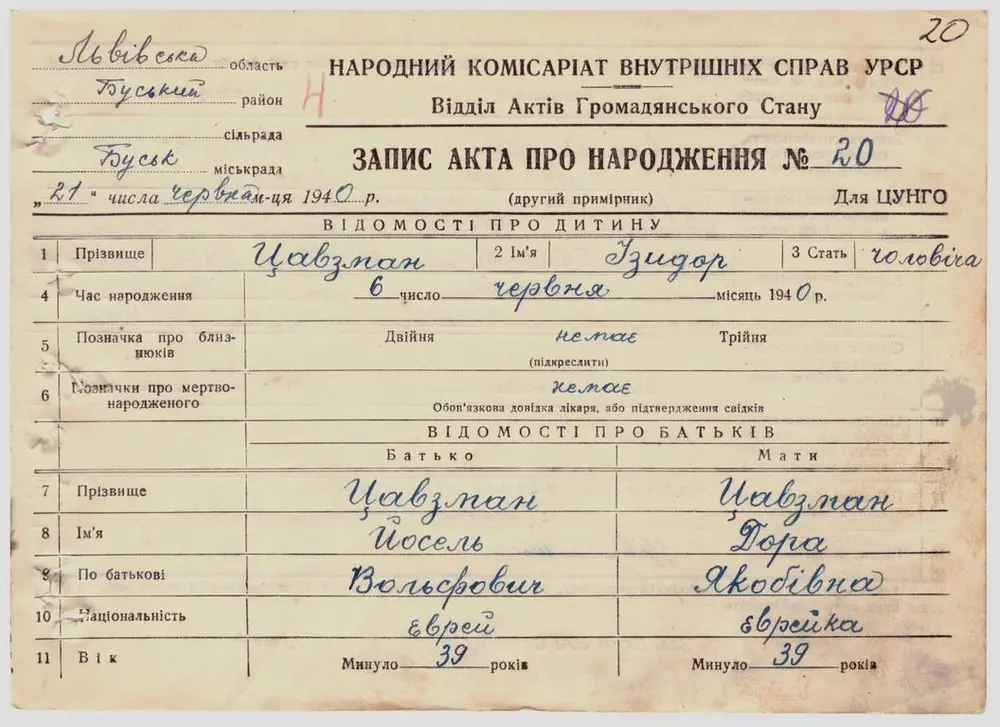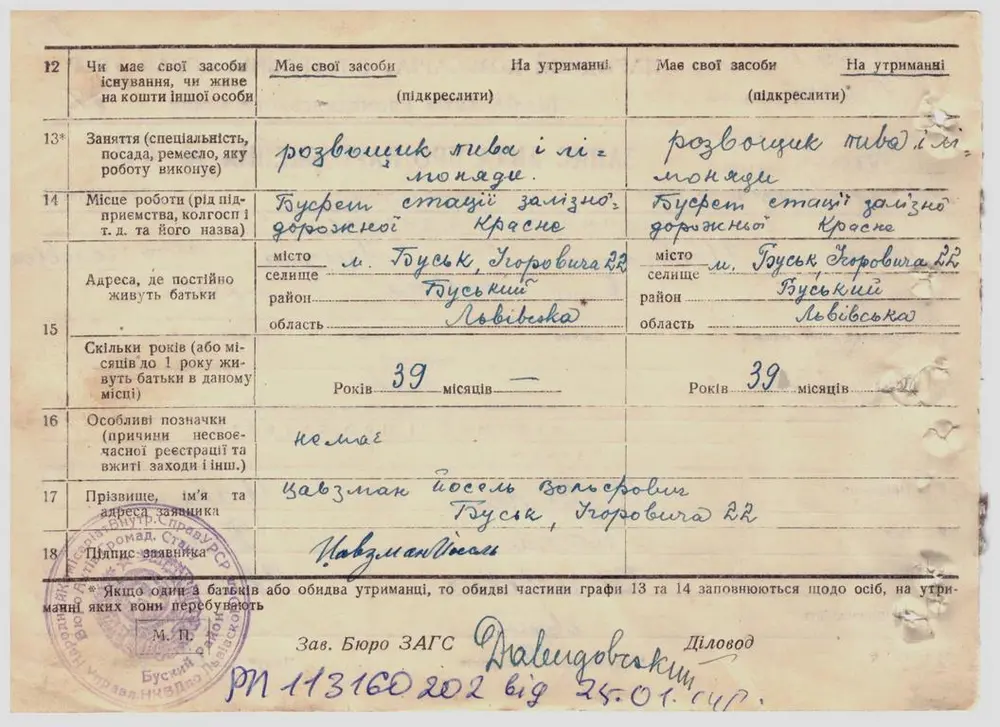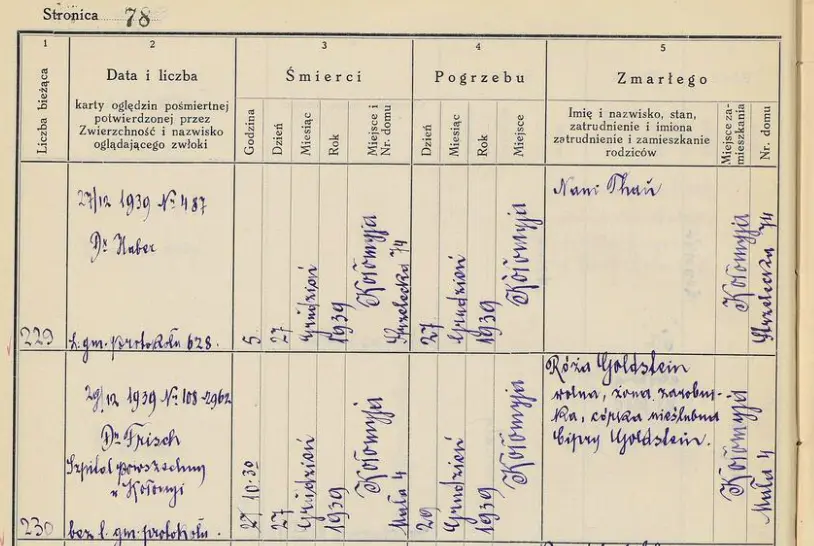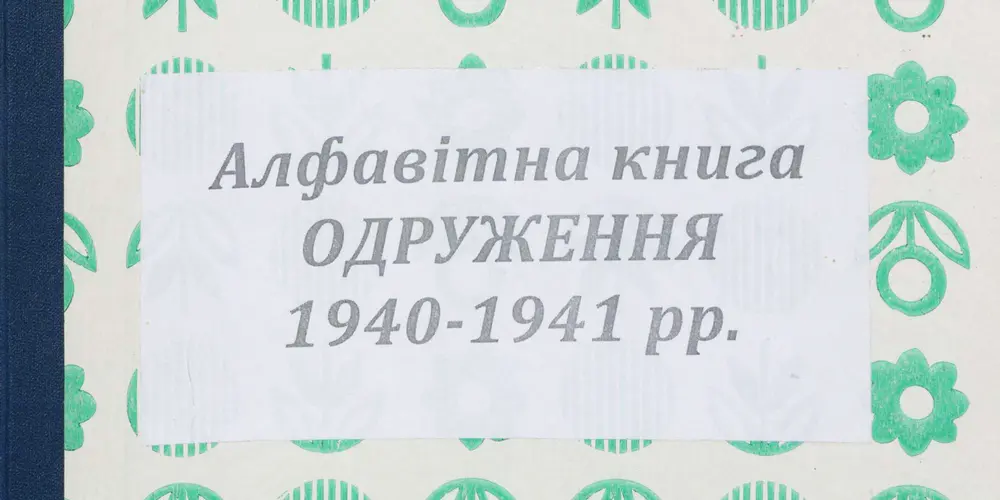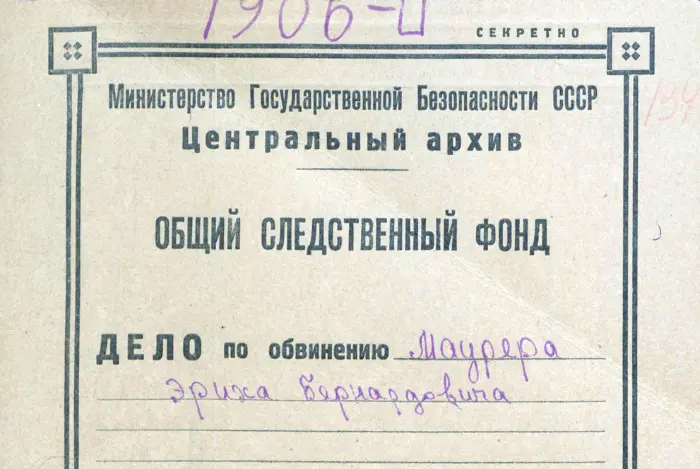The 1940-1941 Vital Records Project
Project Coordinator: Tony Kahane
The 1940-1941 Vital Records Project
Project Coordinator: Tony Kahane
Summary
Following the earlier agreement between Germany and the Soviet Union (USSR), the latter invaded Poland on September 17, 1939. By early October more than half of the pre-war Polish territory had been seized by the USSR, with the rest being already under German occupation. After the annexation of this territory to the USSR had been formalized in early November, the Soviet authorities quickly imposed several administrative changes in the former eastern Galicia, including the creation of a quite different process of registration of vital records and their contents compared to what had been the case before. In this context, the goal of this project is to provide searchable information on Jewish births, marriages, deaths, and divorces found in the vital records from two periods of Soviet control of the former eastern Galicia—the first preceding the German attack on the USSR (1940-June 1941), and the second immediately after the return of Soviet rule (1944-1945).
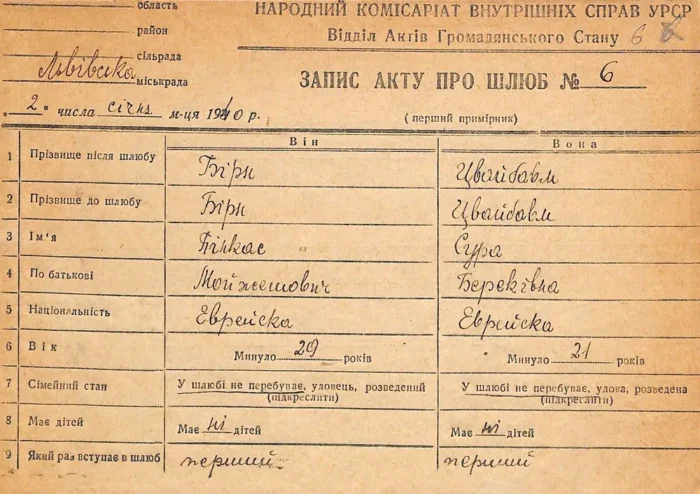
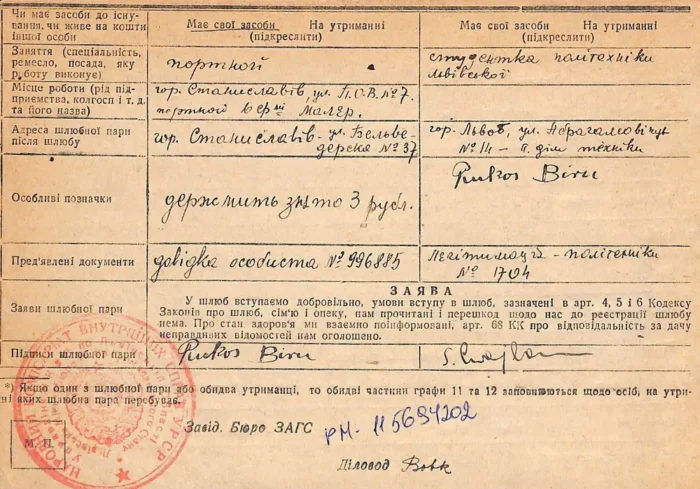
Background
On December 4, the USSR set up new administrative divisions in the annexed territories. The eastern part of the former Galicia and part of Volhynia (a historical region northeast of Galicia), now incorporated into the Ukrainian Soviet Socialist Republic (UkrSSR), were divided into six new regions (oblasts). Four of these oblasts—Lviv (Lwów), Drohobych (Drohobycz), Ternopil (Tarnopol), and Stanislav (Stanisławów, today known as Ivano-Frankivsk)—contained, with minor territorial adjustments, the whole of the former Galicia east of the San River.
By January 2, 1940, civil registration of births, deaths, marriages, and divorces had started in Lviv, soon to be followed by other parts of western Ukraine. Records were maintained by the Soviet authorities in local civil registration offices, known by their acronym of ZAGS or ZAHS (ЗАГС), which later became RATsS (РАЦС).
For a full description of the transition to Soviet control of western Ukraine, please see the article by A. Zalewski and T. Kahane, “Lviv Under the Soviets (1939–1941),” published in Studies of National Movements.
The records
Under Soviet law, vital record books were not to be made public for 75 years. Once this period had expired for the registers in question, the ZAGS offices started to transfer some of the books to the respective state archive for their district. This includes the oblast-level archives of Lviv (DALO), Ivano-Frankivsk (DAIFO), and Ternopil (DATO). With Drohobych oblast having been incorporated into Lviv oblast in 1959, its surviving records from 1940-1945 are now transferred to DALO. By around 2022, the above state oblast archives started to make public the inventories of the vital records they acquired from 1940-1941 and 1944-1945.
Format
The record books are in a very different format and with different contents, from those from interwar Poland. The books were printed in Ukrainian, with the records handwritten in Cyrillic script. For the period 1940-1941, the language of the records is usually Ukrainian, but sometimes Russian. For 1944-1945, we find more records in Russian and fewer in Ukrainian.
“Nationalities”
One important difference with the prewar records is that religious affiliations were not recorded. However, in all the vital record books from the Soviet period in western Ukraine, a person’s “nationality” [національність] was recorded. The common nationalities found are: Ukrainian, Polish, Jewish, and Russian, and occasionally others, such as German, Kazakh, Latvian, and Romanian.
“Patronymics”
A significant difference in the way people’s names are styled in Ukrainian- or Russian-speaking territories, compared to the style in most of west and central Europe, is the ubiquitous use of the patronymic, as a sort of “middle name.” The patronymic shows the father’s given name, possibly in compressed form, with -ovych (-ович) in the case of men, or -ivna (-івна, Ukr.) / -ovna (-овна, Rus.) for women, added to it.
Number of Record Books
As of June 2024, there are some 515 vital record books from 1940-1945 at DALO, of which almost two-thirds are from the between January 1940 and June 1941. DATO and DAIFO have 190 and 42 books, respectively, from 1940-1941, and about 200 books, between them, from 1944-1945. The geographical coverage of a book is usually a single larger town, a district of a city (in the case of Lviv), or a semi-rural or rural district (raion, район), which in many cases consists solely of a collection of small villages. Gesher Galicia is periodically updating the released vital record books from western Ukraine in its own database, searchable at https://www.geshergalicia.org/inventory, including scans of the records where available.
Contents of Record Books
Many of the names in the records from 1940-1941 are Jewish—with the nationality given as “Jewish”, or else presumed to be so where a Jewish given name is recorded, even if the person chose to state their nationality as “Polish”, “Ukrainian”, or “Russian”. In the records from Brody, for instance, over 50% of those recorded have “Jewish” given as their nationality. There is a similar percentage of Jews in the Lviv divorce records, with somewhat lower proportions of Jews in the birth and death records from that town.
In 1944-1945, after the mass killings and deportations to the concentration camps under the German occupation, there were very few Jews left in the region. However, some Jews did manage to survive in hiding. This was the case in Brody, Lviv, Drohobych, and other larger towns, even though they tend to comprise only around 1–2% of the total number of records.
Each individual record appears on two sides of a single sheet in the book. The following are the main items recorded in the different types of record books from western Ukraine in this period. All records include the place and date of the event.
Birth registers: given name, patronymic, and surname of the child; the same details for both the father and the mother, as well as their nationalities, ages, occupations, and places of work; any other significant comments. The child is always given a surname. There was not the strict concern over child legitimacy in the Soviet records as there had been in interwar Poland and Austrian Galicia, and which had led to frequent uncertainty over the child’s surname.
Marriage registers: the details (name, father’s name, age, nationality, occupation, place of work) of both the groom and the bride.
Death registers: given name, patronymic, and surname; age or date of birth; and occupation and place of work, where relevant.
Divorce registers: the same details (including name, age, nationality, and occupation) of both the husband and the wife, as well as the date of the original marriage.
The project
Indexing began in March 2024, with a team of indexers in Ukraine. Initial records worked on included birth, marriage, death, and divorce records from Lwów (Lviv,) and a range of vital records from Brody, Busk, Winniki and Żółkiew (Zhovkva). The project will continue for at least three years. All the indexes will be uploaded to the All Galicia Database, at https://www.geshergalicia.org/all-galicia-database, along with scans of the corresponding pages of records.
Benefits to Researchers
All records from the Holocaust period are of great potential interest to historians, sociologists, and, of course, to family researchers. In the annexed territory of western Ukraine, which was not yet technically in a state of war before June 1941, there were large-scale population movements of desperate and insecure people under considerable harassment from the Soviet regime. [For additional details, please see “The NKVD Criminal Cases Project”, covering the same period.] At the same time, marriages, and in particular divorces, were very much easier to obtain than they had been in interwar Poland. All these new political, economic, and social conditions had a distorting effect on social behavior, which is reflected in the civil records. People married and divorced, for instance, for a much wider range of reasons than had been the case before. As a result, the civil records of the period are a source for valuable historical and social research.
For family researchers, birth records may be of particular interest. Children born in western Ukraine in 1940-1941 are, sadly, unlikely to have survived, unless they were hidden with a non-Jewish family. In either case, knowledge of their births will be valuable for relatives of the family and their descendants today.
There are also many vital records in the DALO, DAIFO and DATO collections from towns in the former Galicia that have few, if any surviving Jewish records from earlier periods. Examples of such towns include Busk and Zaleszczyki (Zalishchyky) as well as Brody, which has many nineteenth-century Jewish records, but very few from the twentieth century.
See also: M. Jacobson & T. Kahane, “Newfound Galician Jewish Records from the Soviet Occupation”, Galitzianer, December 2023, pp.4-9.
For questions on this project, please write to: info@geshergalicia.org.
